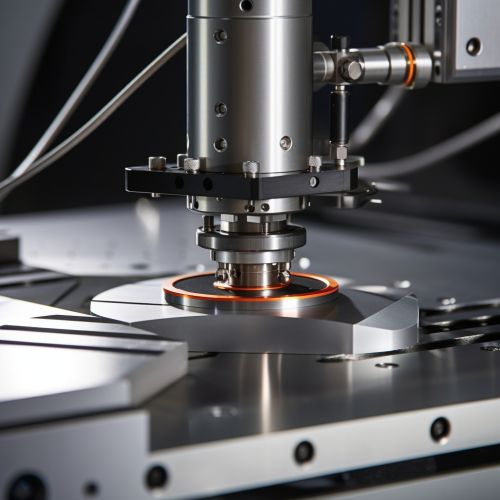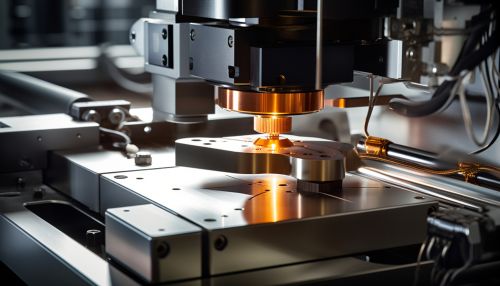Friction force microscopy
Introduction
Friction force microscopy (FFM) is a mode of atomic force microscopy, which allows the measurement and mapping of frictional forces on a nanometer scale. This technique is based on the lateral deflection of an AFM tip as it scans over a surface. The lateral deflection, which is directly related to friction, is measured using a four-quadrant photodiode.


Principle
The principle of FFM is rooted in the interaction between the tip of the AFM and the sample surface. As the tip scans across the surface, it experiences both vertical and lateral forces. The vertical force is due to the van der Waals interaction between the atoms of the tip and the sample, while the lateral force is due to the friction between the two surfaces. The lateral force causes a torsional deflection of the cantilever, which is detected by the photodiode.
Experimental Setup
The experimental setup of FFM involves an AFM with a four-quadrant photodiode. The AFM tip is attached to a flexible cantilever, which is mounted on a piezoelectric scanner. The scanner moves the sample in the x, y, and z directions, allowing the tip to scan the surface. The photodiode is used to detect the deflection of the cantilever, which is proportional to the force experienced by the tip.
Applications
FFM has a wide range of applications in various fields. In materials science, it is used to study the frictional properties of different materials on a nanoscale. In biology, it is used to measure the frictional forces between biological molecules. In nanotechnology, it is used to investigate the frictional behavior of nanostructures.
Limitations
Despite its many advantages, FFM also has some limitations. One of the main limitations is the difficulty in interpreting the frictional force data. The frictional force is influenced by many factors, including the roughness of the surface, the chemical composition of the surface, and the environmental conditions. Therefore, it is often challenging to isolate the effect of a single factor on the frictional force.
